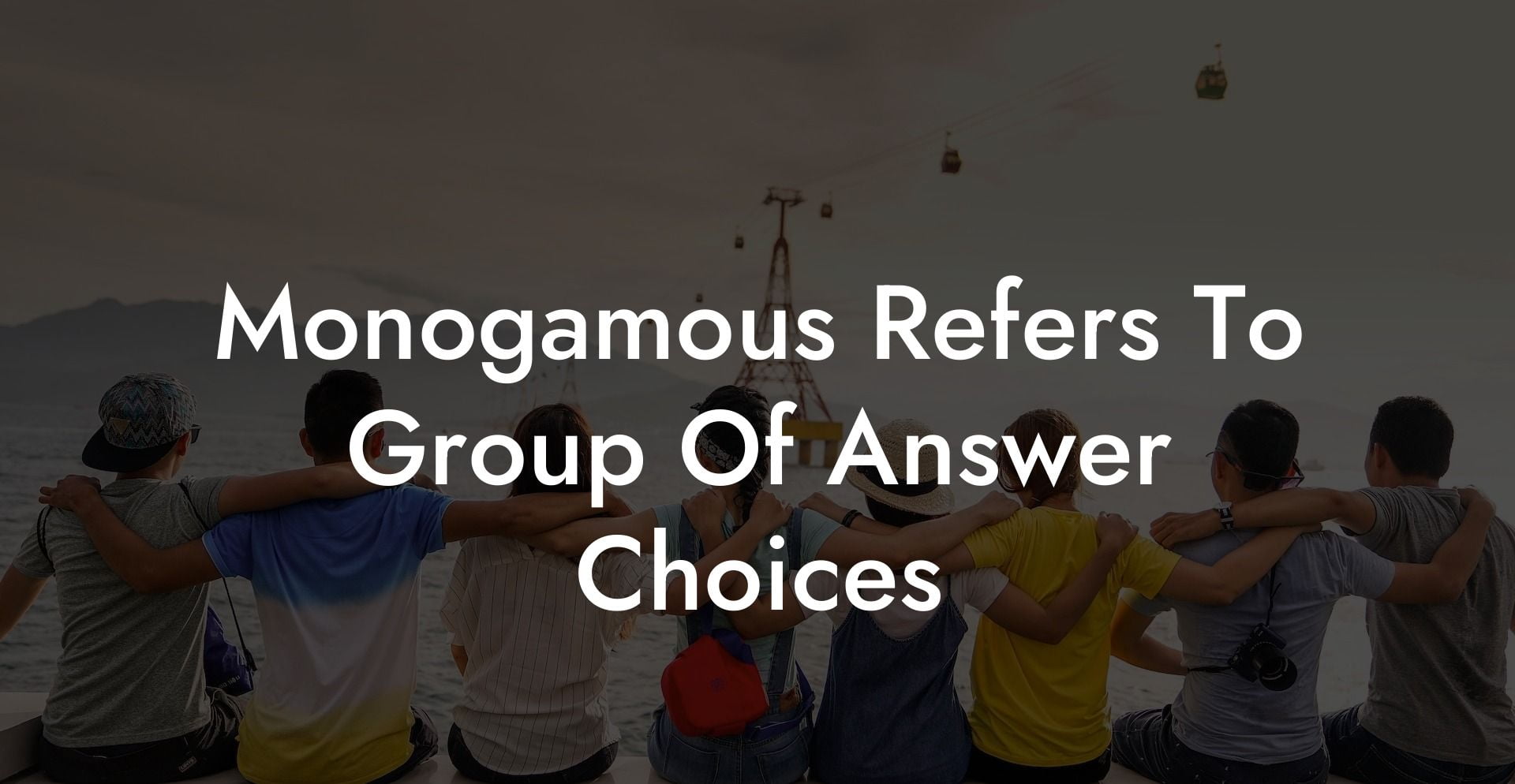Do you find yourself often contemplating the different relationship styles and what might work best for you? Monogamous, non-monogamous, polyamorous... what do all these terms mean, and which one aligns with your personal beliefs? In today's society, people are beginning to question traditional relationship norms and explore new ways of living and loving. This article will delve into the concept of monogamy and the various answers people come up with when faced with the question of what type of relationship they wish to pursue.
Monogamous Refers To Group Of Answer Choices Table of Contents
Understanding Monogamy
Monogamy is a relationship style where both individuals commit to only being with each other, emotionally and romantically. While it is the most common and widely accepted form of relationships in many cultures, it isn't the only option out there. Here are some different types of relationships and their definitions:
1. Non-monogamy
Non-monogamy refers to any relationship style that doesn't involve a commitment to only one partner. This can include various types, such as polyamory, open relationships, and swinging.
- Polyamory - Polyamory is a form of ethical non-monogamy where individuals can have multiple romantic and emotional relationships concurrently. It is based on communication, honesty, and respect for all parties involved.
- Open relationships - An open relationship is another form of ethical non-monogamy where a couple can have sexual relationships with others, but the emotional connection remains primarily between the two committed partners.
- Swinging - Swinging is a form of non-monogamy where couples engage in recreational sexual activities with other individuals or couples. It is mainly focused on sexual exploration and experiences rather than emotional connections.
2. Monogamish
Monogamish is a term coined by Dan Savage, a popular sex and relationship columnist. It refers to a couple that is committed to each other but allows for some degree of sexual exploration outside the relationship, often in the form of a threesome or encounter with another couple. This relationship style can be considered a middle ground between monogamy and full-fledged non-monogamy.
Monogamous Refers To Group Of Answer Choices Example:
John and Lisa's Story
John and Lisa have been married for several years and, like many couples, start to feel the itch for something new and exciting in their relationship. They have always been monogamous but decide to attend a swinging party with another couple they met online. At the party, they engage in sexual encounters with others, always checking in with each other to ensure comfort levels remain intact.
After the party, they find their connection has grown stronger because of the shared experience. In the following months, they attend more swinging parties and begin incorporating non-monogamous experiences into their relationship. However, they always maintain a strong emotional connection with each other as the primary focus.
John and Lisa's relationship exemplifies the concept of being "monogamish," which combines the emotional security of monogamy with the exciting sexual exploration of non-monogamy.
As you can see, there are numerous answers when it comes to choosing the relationship style that fits you and your partner best. Whether you feel connected to monogamy, find excitement in non-monogamy, or land somewhere in between – it's important to discover what aligns with your personal values and desires. Remember that open communication and respect for your partner is the foundation for any successful relationship, regardless of the label you put on it.
We hope you found this guide helpful and encouraging in your journey of self-discovery and understanding of different relationship dynamics. Share your thoughts and stories with us, and feel free to explore the many other guides available on The Monogamy Experiment. Let's break down the barriers of traditional thinking and continue the conversation about the vast spectrum of love and relationships.













